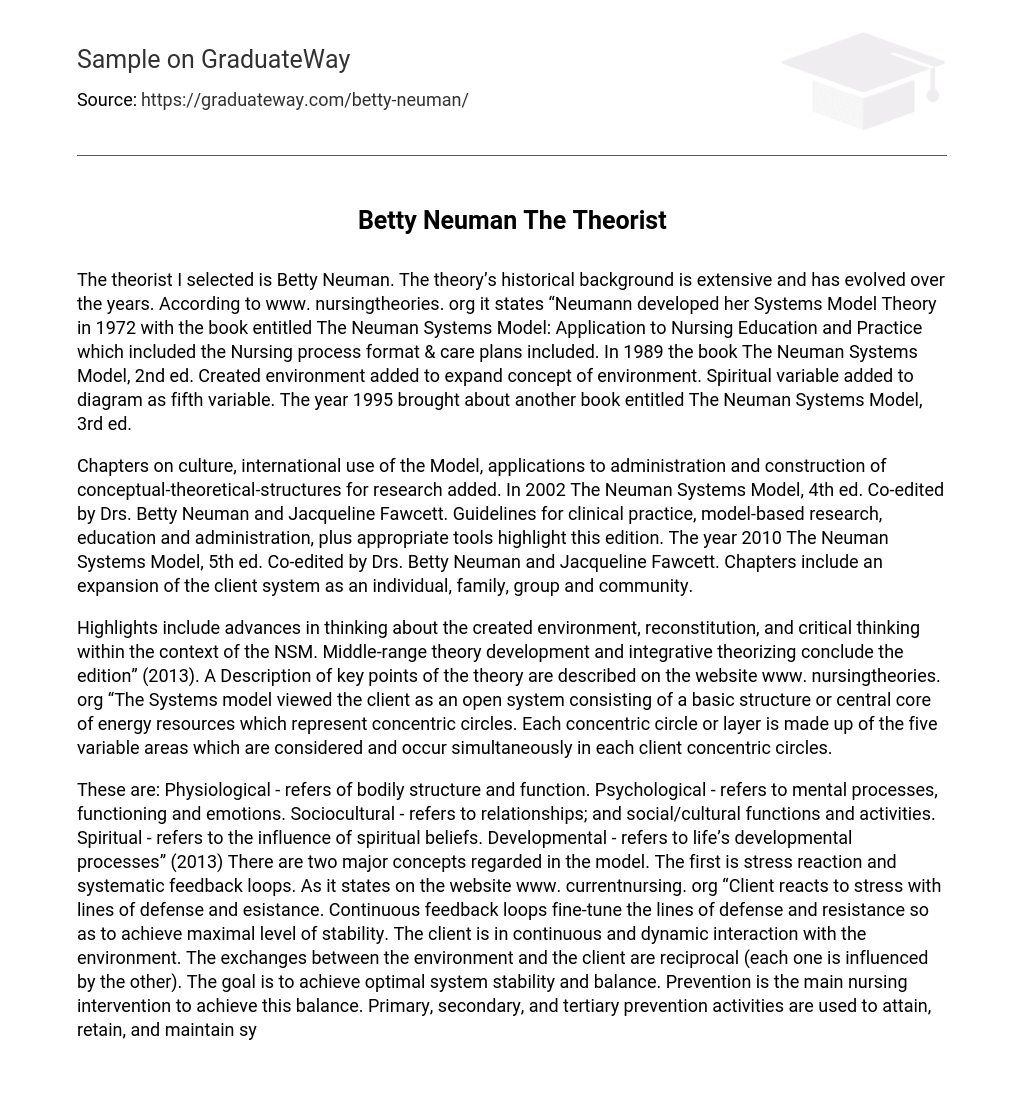The chosen theorist is Betty Neuman. The theory has a long historical background and has undergone several changes over the years. According to www.nursingtheories.org, Neumann developed her Systems Model Theory in 1972 with the book titled The Neuman Systems Model: Application to Nursing Education and Practice. This book included the Nursing process format and care plans. In 1989, the second edition of The Neuman Systems Model was released, which added the concept of environment. A spiritual variable was also added to the diagram as the fifth variable. Another book, titled The Neuman Systems Model, was published in 1995 as the third edition.
The Neuman Systems Model has undergone several editions, each one adding new chapters and expanding its applications. In 2002, the 4th edition was co-edited by Drs. Betty Neuman and Jacqueline Fawcett, and it included chapters on culture, international use of the Model, applications to administration, and construction of conceptual-theoretical structures for research. This edition also emphasized guidelines for clinical practice, model-based research, education, administration, and provided appropriate tools. The 5th edition was published in 2010, still co-edited by Drs. Betty Neuman and Jacqueline Fawcett. In this edition, the chapters included an expansion of the client system, incorporating individuals, families, groups, and communities.
Highlights of the NSM include advancements in thinking about the created environment, reconstitution, and critical thinking. Middle-range theory development and integrative theorizing are discussed in the 2013 edition. On the website www. nursingtheories. org, key points of the theory are described. According to the Systems model, the client is seen as an open system with a basic structure or central core of energy resources represented by concentric circles. Each concentric circle or layer consists of five variable areas that occur simultaneously in each client concentric circle.
These are the different aspects that are considered in the model: Physiological – refers to the structure and function of the body. Psychological – refers to mental processes, functioning, and emotions. Sociocultural – refers to relationships, social and cultural activities. Spiritual – refers to the impact of spiritual beliefs. Developmental – refers to the processes of life development” (2013). According to the website www.currentnursing.org, there are two main concepts in this model. The first is stress reaction and systematic feedback loops. The client reacts to stress using defense mechanisms and resistance. Continuous feedback loops adjust these defense mechanisms and resistance in order to achieve maximum stability. The client is constantly interacting with the environment, and these interactions are reciprocal, meaning each one influences the other. The goal is to achieve optimal system stability and balance. Nursing intervention focuses on prevention as a way to achieve this balance. Primary, secondary, and tertiary prevention activities are used to establish, maintain, and preserve system balance” (2013).





